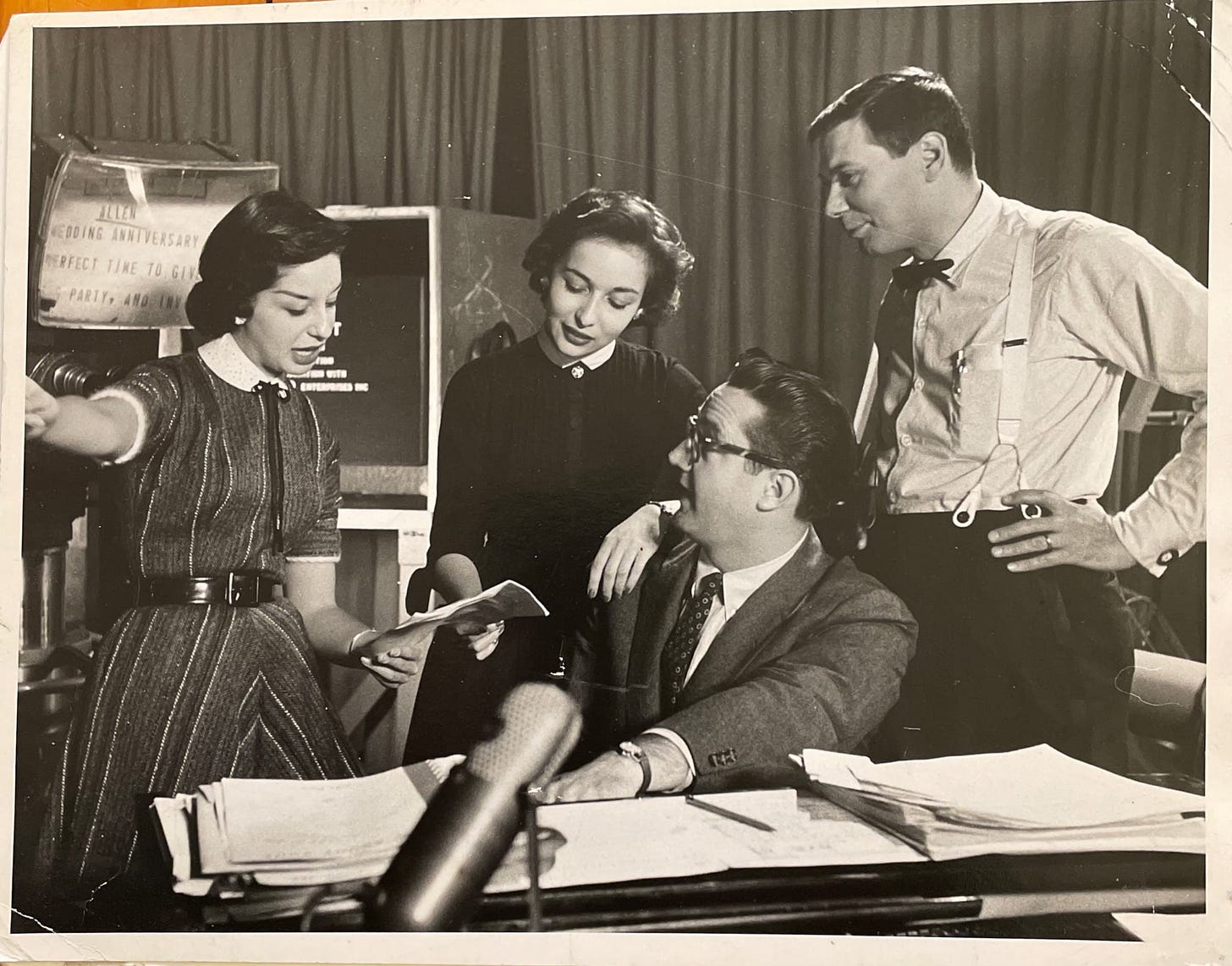Too soon?
I learned about black humor from my mother, Carole Klein, who was a comedy writer for NBC in the 1950s. She and her writing partner were on the staff of the Tonight Show with Steve Allen before they were 20.
I remember the night at the dinner table when she first repeated the classic line, “Besides that, Mrs. Lincoln, how was the play?” I was pretty proud of my 9-year old self for getting the joke, and understanding that humor can have nuance.
So, while the news cycle recovers from the latest security failure involving Donald Trump—and I wonder if he’s getting pressure now to stop hanging around golf courses—here’s some other news from the Trump campaign you probably haven’t seen.
Trump's swing-state plan targets "sometimes" voters
Donald Trump's campaign, lacking the on-the-ground muscle to match Kamala Harris' team, has been rolling out a strategy to target swing-state voters who've shown interest in Trump but often don't vote.
The Trump campaign's internal materials prioritize getting to "hard-to-reach, low-propensity voters" — those who've shown interest in Trump by attending a rally, for example, but aren't necessarily likely to show up at the polls.
The campaign's volunteers have been given a list of 25 "unreachable" and "sometimes" voters, with a goal of visiting at least 10 in person.
As they contact and engage more unlikely voters, volunteers earn rewards.
Those include T-shirts and MAGA caps and "expedited" entry into Trump rallies, and a top prize for the most active volunteers: an invitation to a party at Mar-a-Lago or Trump's inauguration, along with being dubbed a "Trump Force Precinct Captain.”
This confirms what I’ve long thought, and said here:
We used to have another name for the kind of people who believed in conspiracy theories over facts, distrusted or even hated all politicians and paid little to no attention to news about politics.
We called them non-voters.
We need them back.
Not everyone who goes to a Trump rally is exercising their deeply held belief in electoral politics, democratic institutions and the inspiration and heroic aspirations of political speech.
Can I quote Robert Kennedy again, from his 1966 speech before an integrated student audience in South Africa? Try reading this out loud (or doing what I did as a nerdy politics-loving teenager, and memorize it).
“It is from numberless diverse acts of courage and belief that human history is shaped. Each time a man stands up for an ideal, or acts to improve the lot of others, or strikes out against injustice, he sends forth a tiny ripple of hope, and crossing each other from a million different centers of energy and daring, those ripples build a current that can sweep down the mightiest walls of oppression and resistance.”
And then there’s Donald Trump.
Donald Trump knows—well, his campaign knows—that he needs to win not just voters, but fans. His appeal came from dominating television in the 1980s, hosting a show I never watched but now understand was key to his rise and election.
There’s a reason he talks so long at his rallies—fans hate it when a band they’ve waited hours to see only plays for 20 minutes. We thought we understood the power of celebrity to elect a president when we got Ronald Reagan, but Donald Trump is something else.
Now, this campaign hopes that more star power, MAGA hats and invitations to Mar-a-Lago can drive up turnout.
But not every concertgoer buys a T-shirt, or in this case, shows up for that boring part called voting.
For Democrats, I’ve heard consultants say that the secret to turning out more Gen Z voters is to make voting something “extra” on top of messaging focused on social media and cool merch. And much is being made of the “Taylor Swift effect,” with 400,000 new voter registrations tallied following the singer’s endorsement of Kamala Harris.
But as I’ve also often said here, intent to vote does not necessarily translate into actual voter turnout. In fact, when it comes to young voters, it never has.
After you memorize that Bobby Kennedy quote, please remember this, and pass it on:
The U.S. has one of the lowest rates of youth voter turnout in the world. Before the 2022 election, 40% of Gen Z voters told Harvard’s Institute of Politics that they intended to vote. The actual turnout was 23%.
If voting was easy, more people would do it. Part of that is due to organized, deliberate, and racist voter suppression campaigns. But you still have to find out where the polling place is, take time out of a weekday/workday, and muddle through complicated ballots requiring decisions on sometimes unfamiliar offices or issues.
In the past, when children grew up watching their parents vote as Democrats or Republicans, and in most cases followed that example, decision-making at the ballot box was pretty easy.
But now, as political scientist John Holbein writes here,
Many young people lack confidence in themselves and their ability to navigate the voting process for the first time.
Many told us that in their busy, hectic and ever-changing schedules, voting often simply falls by the wayside.
With school and work commitments, as well as a lack of experience filling out voter registration forms and casting a ballot, voting seems like an insurmountable burden for many young people.
Donald Trump is depending on turning out non-voters by rewarding volunteers to harangue them on their doorsteps, while Democrats may be counting on Taylor Swift and the genuine enthusiasm Kamala Harris is generating by the megawatt.
I’ve said this before too:
The voters that will defeat Donald Trump are not as partisan as their parents and grandparents. Gen Z are values-based voters, motivated by threats to their basic rights—clean air and water, feeling safe in school, reproductive rights—and by urgent worries like their long-term economic future.
Cool content on social media won't be enough for first-time voters to get them to the polls—what happens on TikTok may stay on TikTok.
So talk to young people about the issues that can be finally addressed by a Democratic President, House and Senate, particularly if they live in one of the swing states or states like Texas, Nebraska, Florida and Missouri with Senate races that can build on a Democratic majority.
Meanwhile, Donald Trump is fundraising off this latest political violence, while his running mate admits they’re “creating” the migrants-eating-pets story.
There’s nothing funny about that.




